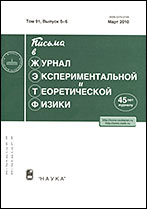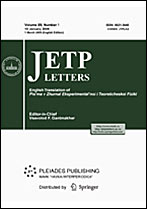|
This article is cited in 6 scientific papers (total in 6 papers)
SCIENTIFIC SUMMARIES
Dark energy in systems of galaxies
A. D. Chernin
P. K. Sternberg Astronomical Institute, M. V. Lomonosov Moscow State University
Abstract:
The precise observational data of the Hubble Space Telescope have been used to study nearby galaxy systems. The main result is the detection of dark energy in groups, clusters, and flows of galaxies on a spatial scale of about $1$-$10$ Mpc. The local density of dark energy in these systems, which is determined by various methods, is close to the global value or even coincides with it. A theoretical model of the nearby Universe has been constructed, which describes the Local Group of galaxies with the flow of dwarf galaxies receding from this system. The key physical parameter of the group-flow system is zero gravity radius, which is the distance at which the gravity of dark matter is compensated by dark-energy antigravity. The model predicts the existence of local regions of space where Einstein antigravity is stronger than Newton gravity. Six such regions have been revealed in the data of the Hubble space telescope. The nearest of these regions is at a distance of $1$–$3$ Mpc from the center of the Milky Way. Antigravity in this region is several times stronger than gravity. Quasiregular flows of receding galaxies, which are accelerated by the dark-energy antigravity, exist in these regions. The model of the nearby Universe at the scale of groups of galaxies ($\sim$1 Mpc) can be extended to the scale of clusters ($\sim 10$ Mpc). The systems of galaxies with accelerated receding flows constitute a new and probably widespread class of metagalactic populations. Strong dynamic effects of local dark energy constitute the main characteristic feature of these systems.
Received: 14.08.2013
Citation:
A. D. Chernin, “Dark energy in systems of galaxies”, Pis'ma v Zh. Èksper. Teoret. Fiz., 98:6 (2013), 394–407; JETP Letters, 98:6 (2013), 353–364
Linking options:
https://www.mathnet.ru/eng/jetpl3527 https://www.mathnet.ru/eng/jetpl/v98/i6/p394
|


| Statistics & downloads: |
| Abstract page: | 284 | | Full-text PDF : | 112 | | References: | 52 | | First page: | 6 |
|





 Contact us:
Contact us: Terms of Use
Terms of Use
 Registration to the website
Registration to the website Logotypes
Logotypes







 Citation in format
Citation in format 
